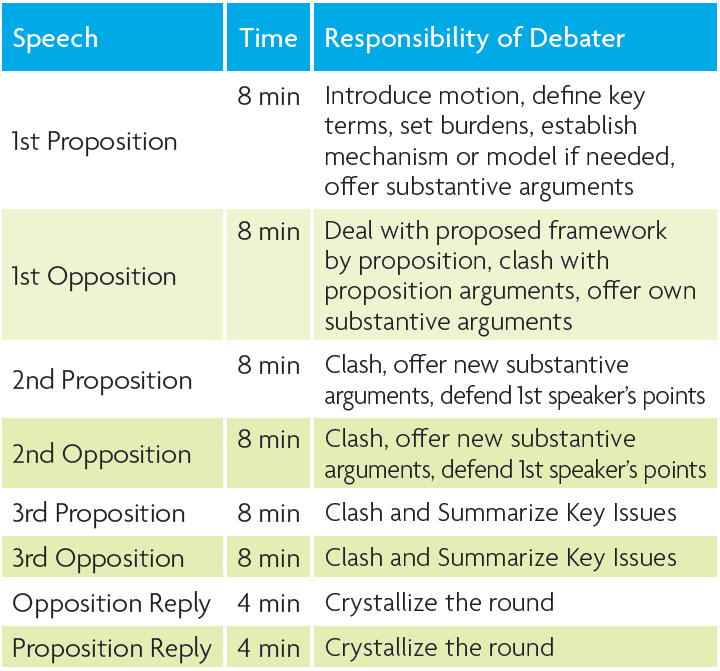How to Debate Like a Pro? Master Techniques for Success
Debating like a pro requires practice and skill. It involves clear arguments, strong evidence, and effective delivery.
Debate skills can elevate your ability to persuade and argue effectively. Whether in a formal debate setting or casual conversation, mastering these techniques is invaluable. Debating isn’t just about speaking; it involves listening, analyzing, and responding thoughtfully. Understanding the structure and strategies of a successful debate can enhance your confidence and performance.
This guide will explore key elements of debating, from preparation to execution. Learn how to present your case compellingly, counter objections, and leave a lasting impression. Ready to sharpen your debating skills? Let’s dive in and uncover the secrets to debating like a pro.
Research And Preparation
Research and preparation are the cornerstones of any successful debate. Proper research helps you understand the topic deeply. Preparation ensures you can present your arguments clearly and confidently. Let’s break down the essential steps for effective research and preparation.
Gather Evidence
Start by gathering credible sources. Look for reliable articles, books, and studies. Ensure your evidence is up-to-date. Facts and statistics strengthen your arguments. Organize your evidence into categories. This makes it easier to reference during the debate.
Know Your Opponent
Understanding your opponent’s perspective is crucial. Research their previous arguments and positions. This helps you anticipate their points. Prepare counterarguments for their main points. Knowing your opponent’s style and strategy can give you an edge.

Credit: www.wikihow.com
Structuring Arguments
Debating requires a clear and organized structure. A well-structured argument makes your points strong and easy to follow. Knowing how to structure your arguments can make a big difference in a debate. Let’s explore how to do this effectively.
Introduction And Conclusion
Your introduction should grab attention. State your main argument clearly. This sets the stage for the rest of your debate. A strong start gives you an advantage.
In your conclusion, summarize your main points. Reinforce your argument. End with a strong statement that leaves a lasting impression. This brings your debate full circle.
Main Points And Subpoints
Identify your main points. These are the key ideas that support your argument. Each main point should be clear and concise.
Break down each main point into subpoints. Subpoints provide evidence and examples. They add depth to your argument.
Use facts and statistics to back up your subpoints. This makes your argument more convincing. Be sure your evidence is reliable.
Keep your structure simple. Avoid complex language. This helps your audience understand your argument better.
By structuring your arguments well, you can debate more effectively. Your points will be clearer, stronger, and more persuasive.
Delivery Techniques
Effective delivery techniques can make or break your debate performance. Mastering these skills can help you communicate your arguments clearly and confidently. Good delivery techniques include controlling your voice and using body language effectively.
Voice Control
Voice control is crucial in debates. It ensures your points are heard and understood. Speak clearly and at a steady pace. Avoid speaking too fast or too slow. Volume matters too. Ensure you are loud enough to be heard, but not too loud to appear aggressive. Use pauses to emphasize important points. This gives your audience time to absorb your message.
Body Language
Body language can enhance your words. Stand straight to show confidence. Make eye contact with your audience. This builds a connection and shows you are engaged. Use hand gestures to emphasize your points. Avoid crossing your arms or slouching. These actions can make you seem defensive or uninterested. Smile when appropriate. A friendly demeanor makes you more approachable and trustworthy.

Credit: www.instagram.com
Rebuttal Strategies
Debating is not just about presenting your arguments. It is also about responding to your opponent’s points. This is where rebuttal strategies come in. Rebuttals help you counter your opponent’s arguments and strengthen your own position.
Identifying Weaknesses
To build a strong rebuttal, first identify the weaknesses in your opponent’s arguments. Listen carefully to their points. Find any inconsistencies or gaps in their logic. Look for unsupported claims or shaky evidence. These weak spots are your targets.
Effective Counterarguments
Once you identify weaknesses, create effective counterarguments. Use clear and simple language. Show why your opponent’s points are flawed. Provide evidence to support your rebuttal. Make sure your counterarguments are concise and to the point.
Remember to stay calm and respectful. Strong rebuttals are about logic, not emotion. Practice these strategies to debate like a pro.

Credit: www.tiktok.com
Frequently Asked Questions
What Are The Basics Of A Good Debate?
A good debate needs clear arguments. Listen well. Respect the other side.
How Can I Improve My Debating Skills?
Practice regularly. Watch experienced debaters. Learn new facts. Stay calm under pressure.
What Should I Avoid During A Debate?
Avoid interrupting others. Don’t get too emotional. Stay away from personal attacks.
Conclusion
Debating like a pro takes practice and patience. Stay calm and listen carefully. Present your arguments clearly and confidently. Always respect your opponent’s views. Practice makes perfect, so keep debating. Remember, good preparation is the key. Use these tips to improve your debating skills.
With time, you will become more confident. Debate with friends or join a club. Keep learning and stay curious. Happy debating!




